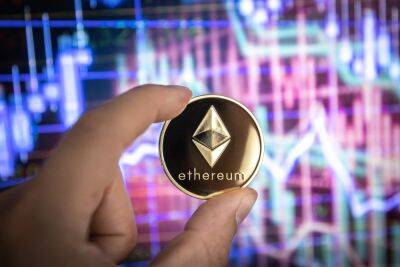Ethereum’s Deflation Rate Keeps Rising – Here’s What That Means for the ETH Price
The annualized daily net inflation rate of the Ether (ETH) supply hit a record low of -2.772% last Tuesday, according to data supplied by crypto analytics firm Glassnode. Ether is the token that power’s the smart-contract-enabled Ethereum blockchain, which is currently the world’s dominant blockchain in terms of the size of its associated ecosystem of decentralized applications. Ether is the second-largest cryptocurrency by market capitalization.
Ether’s net inflation rate has since risen to around -1% as of Sunday. But there has been a clear trend over the course of the last month. The rate at which the Ether supply is falling, or deflating at, is accelerating. And if current trends activity in the Ethereum network continue, that deflation rate could further accelerate, a trend many analysts think would be bullish for the ETH price.
According to Glassnode, the gas price on the Ethereum network hit a seven-month high of 64 Gwei. 1 Gwei is equal to 0.000000001 ETH. The minimum gas fee (denominated in Gwei) that a user needs to pay for a transaction is calculated by multiplying the Gwei Gas Price by the Gas Limit, which is currently 21,000.
That means that, last Tuesday, when the gas price hit 64 Gwei, users had to pay a minimum of 1,344,000 Gwei, or 0.001344 ETH per transaction. That’s roughly $2.10 based on Ether’s closing price last Tuesday. By Sunday, the gas price had fallen to around 30 Gwei, meaning a transaction fee of 0.00063 ETH, roughly $1.06 based on Sunday’s closing Ether price.
A rising gas price (as represented by a rise in Gwei) is directly related to the rate at which the Ether supply is burned. Before understanding why, we must quickly understand how the Ethereum network fee structure works. Network fees are
Read more on cryptonews.com


![Bitcoin [BTC] long liquidations soar as price crashes below $23k, more inside - ambcrypto.com](https://finance-news.co/storage/thumbs_400/img/2023/3/4/58282_ab9on.jpg)











![Can Lunc - Terra LUNA Classic [LUNC] Price Prediction 2025-2030: Can LUNC cross $0.00030? - ambcrypto.com](https://finance-news.co/storage/thumbs_400/img/2023/3/3/58219_2e5r.jpg)



